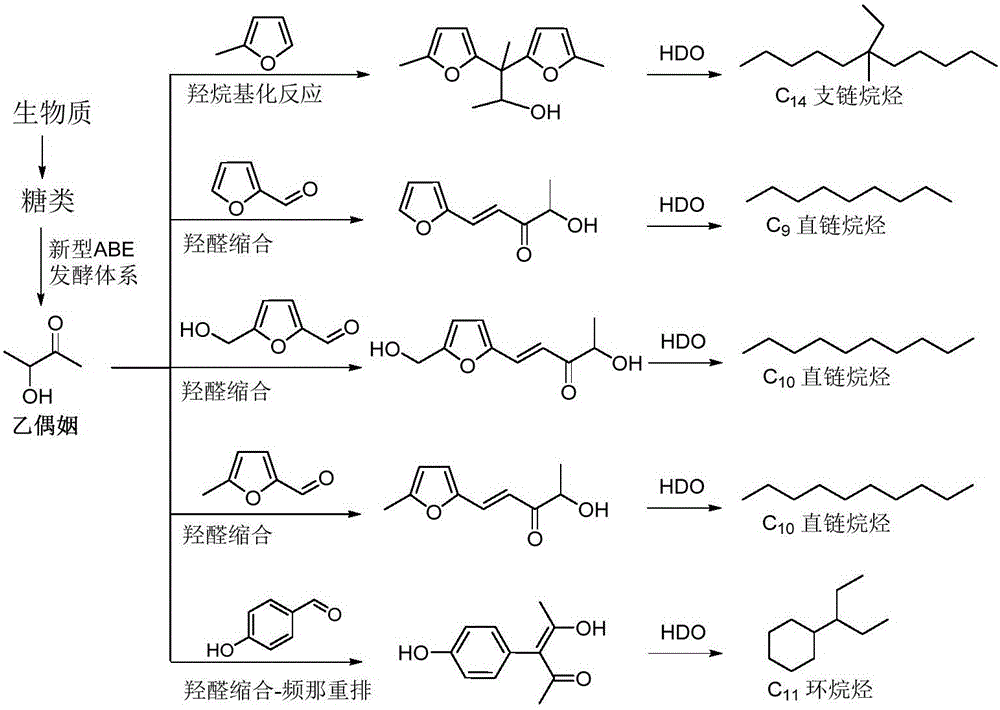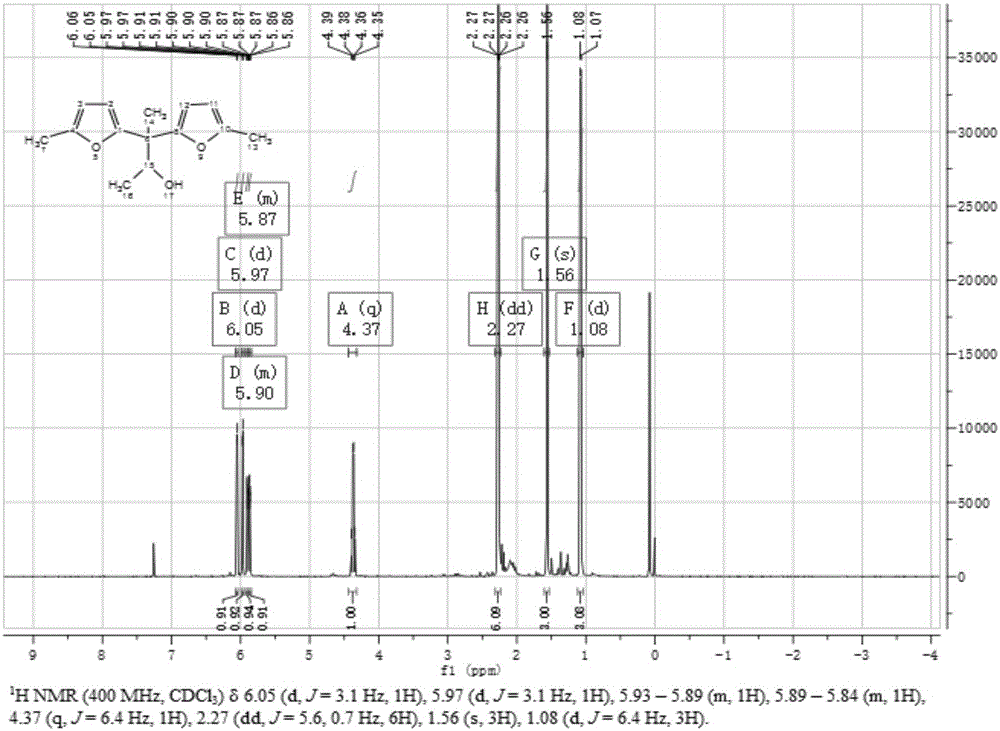Method for preparing liquid fuel through catalytic conversion of biomass platform compound and ABE fermentation product acetoin
A technology for fermentation products and liquid fuels, which is used in the preparation of liquid hydrocarbon mixtures, biological raw materials, and the petroleum industry.
- Summary
- Abstract
- Description
- Claims
- Application Information
AI Technical Summary
Problems solved by technology
Method used
Image
Examples
Embodiment 1
[0042] The experimental device is mainly an eggplant-shaped bottle, which is placed on a magnetic stirrer, and a reflux condenser is placed on it. The raw materials and catalysts are added to the bottle according to a certain molar ratio, the magnetic stirrer is turned on, and the reaction is carried out in a water bath. After the reaction is completed, the reaction Liquid filtration, catalyst washing, drying recovery.
Embodiment 2
[0044] The experimental device is the same as in Example 1, and accurately weighs 2-methylfuran and acetoin in an eggplant-shaped bottle according to the molar ratio of 2.5:1, and then weighs the trifluoromethanesulfonic acid (TFA- ZrO 2 ) in the raw material solution, the molar ratio of the acid catalyst to acetoin was 0.1:1, and the reaction was performed under magnetic stirring in a water bath at 65° C. for 2 hours without solvent. After the reaction is finished, the reaction solution is filtered, the catalyst is washed, dried and recovered. The reaction conversion rate of this step is 100%, and the selectivity to the target product is 93.45%. Target product NMR see image 3 with Figure 4 .
Embodiment 3-6
[0046] The experimental setup is the same as in Example 1. Accurately weigh 2-methylfuran and acetoin in eggplant-shaped bottles according to the molar ratio of 2.5:1, then weigh the acid catalyst p-toluenesulfonic acid (embodiment 3), Amberlyst- 15 resin (embodiment 4), Nafion-212 lipid film (embodiment 5), sulfonated zirconia (S-ZrO 2 ) (Example 6) In the raw material solution, the molar ratio of the acid catalyst to acetoin was 0.1:1, and the reaction was carried out under magnetic stirring in a water bath at 65° C. for 2.5 hours without solvent. After the reaction, the reaction solution was filtered, the catalyst was washed, dried and recovered (p-toluenesulfonic acid was extracted by adding water and ethyl acetate, and the organic phase was concentrated). Selectivity and conversion are shown in Table 1:
[0047] Selectivity and conversion rate of table 1 embodiment 3-6
[0048] Example
PUM
 Login to View More
Login to View More Abstract
Description
Claims
Application Information
 Login to View More
Login to View More - R&D
- Intellectual Property
- Life Sciences
- Materials
- Tech Scout
- Unparalleled Data Quality
- Higher Quality Content
- 60% Fewer Hallucinations
Browse by: Latest US Patents, China's latest patents, Technical Efficacy Thesaurus, Application Domain, Technology Topic, Popular Technical Reports.
© 2025 PatSnap. All rights reserved.Legal|Privacy policy|Modern Slavery Act Transparency Statement|Sitemap|About US| Contact US: help@patsnap.com



